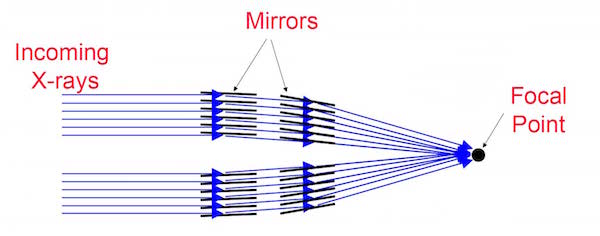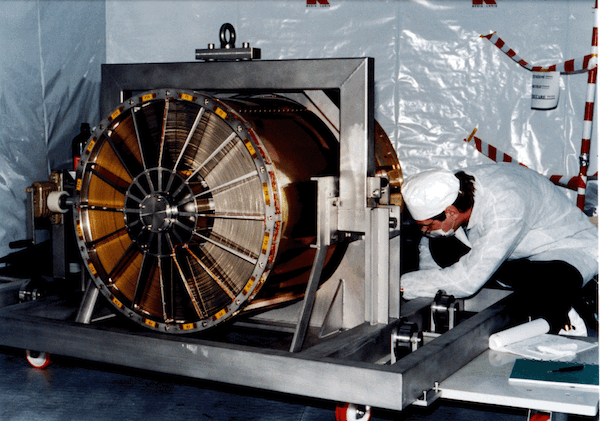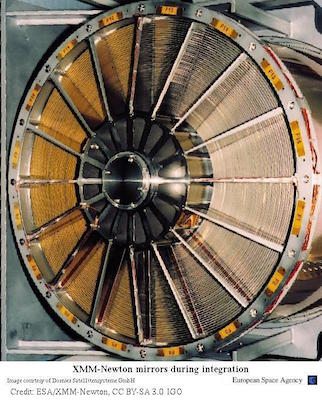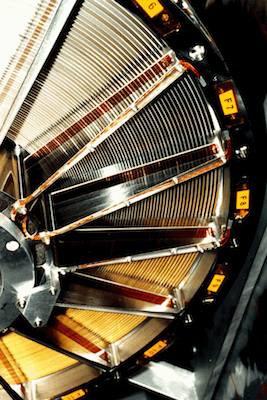X-ray Mirrors
XMM-Newton uses an unusual technique to focus the X-rays onto the different detectors. A "normal" telescope works by reflecting and focusing light. However, X-rays have such high energy that they pass through most materials, making reflection impossible. Instead, for an X-ray telescope, the mirrors are arranged so that the incoming X-rays graze off of the mirrors, like a stone skipping on water. The shape and highly-polished surfaces of the mirrors ensure that the incoming X-rays are focused into a beam when they enter the detectors, just like a "normal" telescope makes a beam of light entering your eye.

Diagram of a cut-away of an X-ray telescope with several sets of mirrors. By nesting the mirrors one within the other, more X-rays are focused, giving astronomers a brighter image. (Credit: NASA's Imagine the Universe)
There are actually three complete sets of X-ray telescopes on-board the satellite, each of which consists of 58 wafer-thin nickel mirrors. The mirrors are gold-plated and nested in each other just a few millimeters apart. XMM-Newton's nested mirror design made it possible to have the largest collecting area of focusing optics deployed for X-ray astronomy. The total mirror surface area exceeds 120 square meters, larger than a tennis court. No previous X-ray satellite could focus even approximately as much radiation as XMM-Newton.
![]() Show me more about X-ray telescopes and how they work.
Show me more about X-ray telescopes and how they work.

XMM mirror module being testing at the Centre Spatial de Liege, an optical test facility in Belgium. The module is viewed from the "front", i.e. the side from which photons enter during operation. In front, one can see the "spider" on which the 58 mirror shells are mounted. (Photo courtesy of D. de Chambure, XMM-Newton Project, ESA/ESTEC)


Left: The XMM-Newton mirror modules on the backside of the XMM-Newton service module. (Image courtesy of Dornier Satellitensysteme GmbH and ESA) Right: A close-up view of the XMM-Newton mirrors. (Photo courtesy of D. de Chambure, XMM-Newton Project, ESA/ESTEC)



